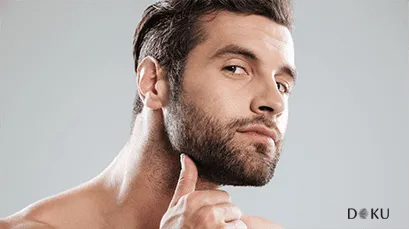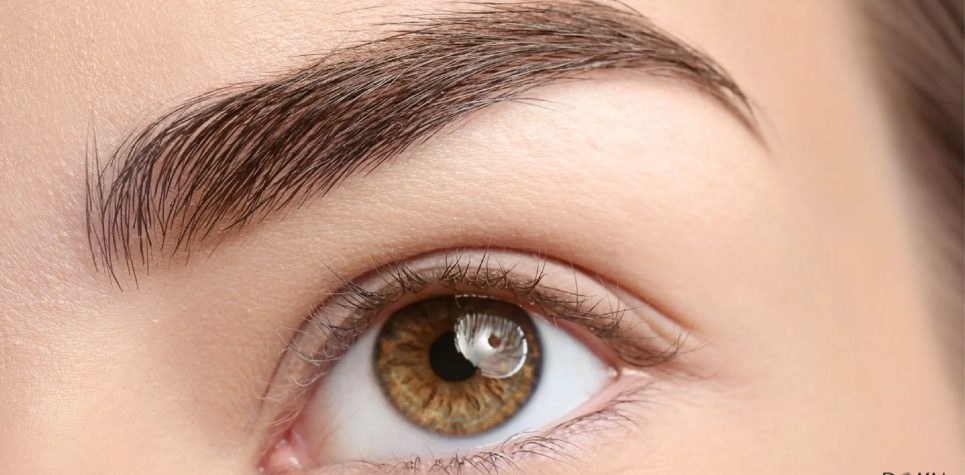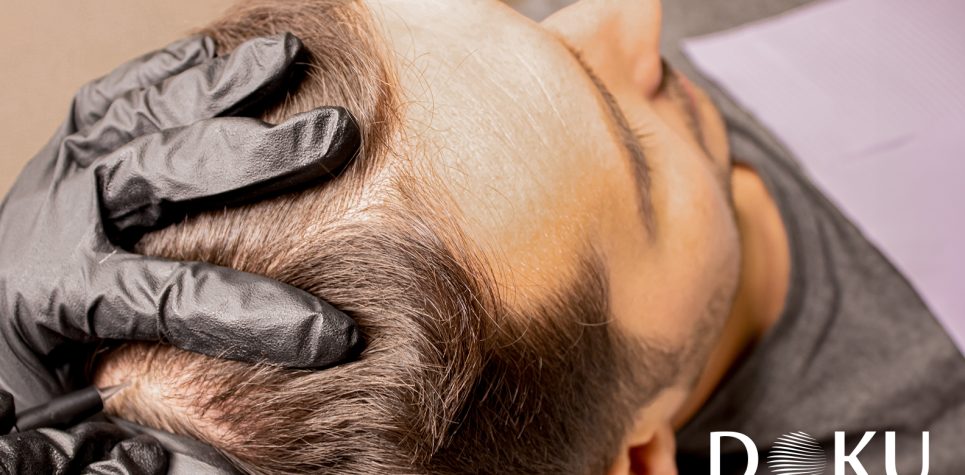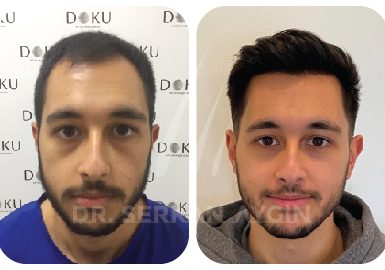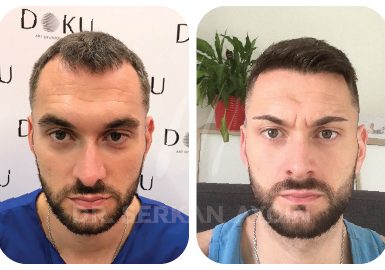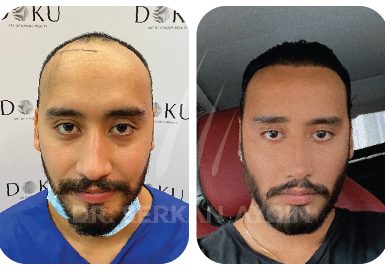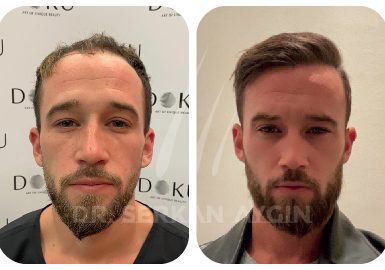Hair Transplant Turkey








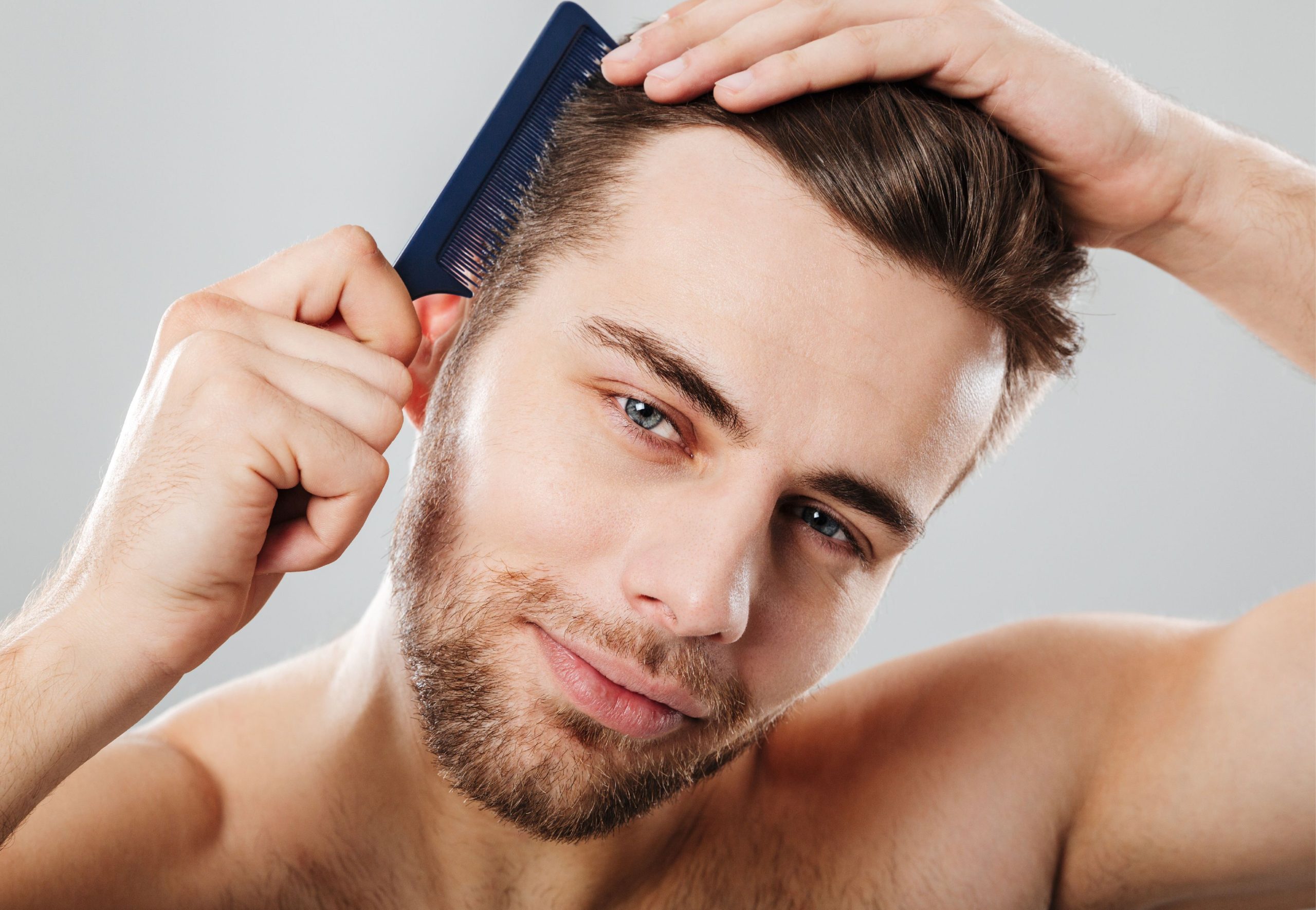
Hair Transplant Turkey Istanbul
Istanbul has become a global hub for hair transplants due to its combination of advanced medical technology, highly experienced surgeons, and competitive pricing. Clinics like Doku Clinic offer international standards of care at a fraction of the cost compared to the U.S. or Europe. Moreover, the city’s reputation for medical tourism is backed by thousands of satisfied patients and modern facilities that prioritize both safety and aesthetic results.
What Makes Doku Clinic Stand Out Among Other Hair Transplant Clinics in Istanbul?
Doku Clinic distinguishes itself with its personalized treatment plans, cutting-edge technology, and a team of specialists with years of experience. Unlike many clinics that follow a one-size-fits-all approach, Doku Clinic assesses each patient’s hair type, scalp condition, and aesthetic goals. Their success lies not only in restoring hair but also in delivering natural-looking, long-lasting results tailored to individual needs.
Hair Transplant Turkey Cost Table (2026 Current Prices)
| Number of Grafts | Approximate Price (Euro) | Explanation |
|---|---|---|
| 2000 Graft | €2,500 – €6,000 | Light sparseness makes it ideal for application to small areas. A natural look is aimed. |
| 3000 Graft | €3,000 – €6,000 | It is suitable for those who experience moderate hair loss. Hairline and crown area may be covered. |
| 5000 Graft | €5,000 – €6,000 | Provides maximum coverage in large areas of baldness. It offers intense and natural results. |
Can international patients expect language support at Doku Clinic?
Absolutely. Doku Clinic caters to a large number of international patients, and their staff includes English-speaking coordinators and medical professionals. From the initial online consultation to post-op instructions, communication is clear and seamless, making the entire journey comfortable for patients traveling from abroad.
How long is the recovery time after a hair transplant Turkey?
The initial recovery phase for hair transplant Turkey lasts about 7 to 10 days, during which patients should avoid strenuous activity and direct sun exposure. Doku Clinic provides a detailed aftercare plan, including shampooing techniques and follow-up guidance. Hair shedding begins after 2–3 weeks—a normal part of the growth cycle—and new hair typically starts appearing within 3 to 4 months, with full results visible at around 12 months.
Is Turkey Good for Hair Transplant Operations?
Turkey has garnered a global reputation as a top destination for hair transplant procedures. With competitive prices, skilled medical teams, and advanced facilities, it’s no wonder patients from around the world choose Turkey to restore their hair. Below is an in-depth look at why Turkey stands out in the hair transplant industry and what you should know before making your decision.
1. World-Class Medical Expertise
One key factor behind Turkey’s success is the high level of medical expertise. Many Turkish surgeons specialize in hair restoration, honing their skills through rigorous training and years of experience. Clinics often employ certified, multilingual medical teams who keep up to date on the latest techniques—such as Follicular Unit Extraction (FUE) and Direct Hair Implantation (DHI)—ensuring each patient receives state-of-the-art treatment.
2. Cutting-Edge Facilities
Top-rated clinics in Istanbul and other major cities boast modern operating rooms equipped with advanced technology. High hygiene standards, strict regulations, and a focus on patient comfort underscore Turkey’s commitment to quality. Many clinics also offer private recovery rooms and personalized care packages to help patients feel at ease during their stay.
3. Competitive Pricing
Another compelling reason Turkey is favored for hair transplants is the cost advantage. Treatments in Turkey can be significantly more affordable compared to clinics in the United States, Europe, or other parts of the world—often by up to 50–70%. This affordability attracts patients seeking high-quality procedures without incurring the steep fees seen elsewhere.
4. Comprehensive Packages
Most hair transplant Turkey clinics provide all-inclusive packages. These typically cover:
-
Airport transfers
-
Accommodation in reputable hotels
-
Pre-operative consultations
-
Post-operative care and medications
Such packages streamline the process for international patients, eliminating much of the stress associated with planning medical travel. This turnkey approach helps patients focus on recovery rather than logistics.
Hair Transplantation Stages
Hair transplantation consists of four stages. The stages that will be mentioned here are the stages that make up the basis of the operation on the day of the operation. These are:
- Application of local anesthesia (The only and most important part of hair transplantation where you will feel pain)
- Harvesting hair follicles
- Establishing the channels (in the DHI method, this stage is combined with the next stage)
- Transplantation of hair (Local anesthesia is applied beforehand)
First Stage: Local Anesthesia in Hair Transplantation
This stage is the most crucial point of painless hair transplantation. In order for the hair to be collected, the hair follicles, together with the skin around the hair, must be cut and separated with the help of a micro-motor. Anesthesia must be administered prior to this procedure.
Pain from this process cannot be felt as the anesthesia application area will lose sensation. At this point, it would be correct to say that hair transplantation is a painless procedure.
The only time you will experience pain is at the time of anesthesia administration. As local anesthesia application is painless, hair transplantation can also be considered ‘painless’. Although needle anesthesia continues to be used in procedures, there are also new approaches for eliminating the pain caused by this technique. These include:
Needle-free local anesthesia/local anesthesia with pressure
It has been developed to reduce the pain in anesthesia application using needles. It is carried out with a device that can inject the anesthetic substance into the skin with pressure. This device is touched to the skin and with high pressure leaves the fluid anesthetic substance on the skin surface. Afterwards, anesthesia is applied with a needle.
This anesthetic agent first applied is not homogeneously distributed on the skin and does not penetrate under the skin. In the subsequent application of needle anesthesia, pain may still be felt.
Local anesthesia with sedation
Sedation is one of the most advanced and important facilities in the field of anesthesia in medicine, which can be administered even to children. Sedation describes the administration of the pain relievers (analgesic active substances) in the appropriate doses to the body through a vascular access.
Thus, no pain is felt during the procedure, as in drawing blood or other medical interventions. In this application, the consciousness of the person remains intact, but the sensation decreases.
It is important to have an anesthesiologist present during the sedation process. The dose of sedation to be applied is determined by the doctor depending on the physical activity and pain threshold of the individual.
Second Stage: Harvesting Hair Follicles
The hair is collected by separating it from the skin with cylindrical incisions with the help of a micro-motor. Here, the diameter of the tip of the micromotor is a minimum of 0.6 mm, which depends on the thickness of the person’s hair and whether single or multiple grafts are being used. Hair is collected with cylindrical needles up to 0.7 mm, 0.8 mm and 1.00 mm in width called punches.
Third Stage: Opening the Channels
The channels where the collected hair follicles will be placed for hair transplantation are opened with metal slits and sapphire tips which were invented more recently. Since sapphire tips are smoother, they cause less damage to the skin.
The channel opening phase is the most important phase that determines the quality of the operation. While opening the channels where the hair will be transplanted, the angle and direction should be determined very carefully. In this way, a natural-looking transplant can be achieved.
With the implanter used in the DHI method, hair follicles can be planted without the need to open channels.
Fourth Stage: Hair Transplantation
The hair follicle is placed in the channels. What must be noted here is that the channels are opened in the correct direction. If the channels are established in an incorrect direction, the transplanted follicles cannot gain a natural appearance.
Another critical point at this stage is which of the opened channels will be planted with single grafts and which with multiple grafts. The basic principle here is to plant single grafts in the more frontal parts of the hairline. With this in mind, a natural look can be achieved more easily.
What is Sapphire FUE Hair Transplantation?
With the continuous advancements in technology, innovations are made in hair transplantation techniques and hair loss treatments. In particular, hair transplantation operations are making great progress in parallel with the development of the instruments used.
The FUE method is considered the most advanced hair transplant technique and the success achieved thanks to FUE is increasing day by day. Sapphire FUE hair transplantation method, which is carried out using special devices with sapphire tips, takes the success in this field one step further.
The success rate and comfort of the FUE hair transplantation method, which has been applied for many years and is a globally accepted hair transplantation technique, is made possible with the sapphire tip technology. With Sapphire FUE, a faster healing process is experienced and more natural looking results are obtained.
In order to open channels for hair transplantation, instead of the metal slits preferred in conventional FUE, tips made of sapphire, which is among the precious metals, are used. FUE with a sapphire tip is not a technique in itself, but an innovation applied in the FUE method.
Stages of Sapphire Fue Hair Transplantation
Hair transplantation consists of 4 main stages:
1. Preparing for Hair Transplantation
The area where the follicles will be planted on is disinfected. In addition, anesthesia is applied. The preparation stage is the stage that determines the level of comfort during the operation.
2. Collection of Hair Follicles
In Saphire FUE, hair follicles are harvested from the donor area one by one with the help of micro motors, using micro-tips with diameters of 0,6, 0,7, and 0,8 mm depending on the hair follicles.
3. Opening of the Channels
Small (micro) channels are opened. It is aimed to accelerate the healing process by keeping the intensity of this process to a minimum. These channels greatly affect the appearance of the hair and directly determine the angle, direction and density of the hair. For this reason, opening of the channels is considered the most important stage in determining the success of a hair transplant procedure.
4. Transplantation of Hair Follicles
The collected follicles are placed in the opened channels. The small channels opened with sharp, smooth and durable sapphire tips in sizes of 1.0 -1.3 – 1.5 mm are in the size of the hair follicle, allowing a larger number of channels to be and the hair follicles to be planted closer together.
In hair transplantation, the natural hair angle is considered 40 to 45 degrees. Otherwise, planting the hair at very right angles to ensure density can cause what is called a grass man appearance.
With painless, needle-free hair transplantation, do not give up your comfort!
In hair transplantation, local anesthesia is administered at the very beginning of the operation, that is, before the hair follicles are harvested from the donor area. In local anesthesia performed with a needle, it takes time for the active substance to lower sensation in the body. The pinprick sensation felt during needle insertion can naturally lead to discomfort.
Today, hair transplants can be carried out using special anesthesia instruments, without pain and the need for needles. These special instruments administer the anesthetic agents under the skin with a pressure spray system. As the time of onset of the effects of anesthesia application performed with a needle-free injector is faster than that with a needle, it provides more comfort.
The liquid gel system, which makes it possible to administer anesthesia without the need for a needle, penetrates a wider area compared to local anesthesia application with a needle and thus has a greater effect. If you have a needle phobia or are hesitant to have a hair transplant for other reasons, you can easily have this procedure carried out thanks to this new technique.
Comparison of Sapphire FUE and the Conventional FUE With A Metal Slit
Advantages of hair transplantation with Sapphire FUE compared to hair transplantation with conventional FUE (carried out with a metal slit):
- Using a sapphire tip during the grooving process ensures there is less vibration due to its smooth surface with anti-bacterial properties and physical qualities such as hardness, sharpness and durability. In this way it is ensured that both the trauma and the risk of tissue damage are kept to a minimum.
- Transplantation can be carried out more frequently with Sapphire FUE compared to the conventional FUE method, which makes it possible to carry out hair transplant in patients with hair loss in more advanced stages.
- It helps the grafts to be planted more frequently and provides a more natural look with higher hair density.
- Compared to conventional FUE, less fluid is injected under the skin, making it easier to open channels.
- The post-operative period is more comfortable for the patients in every sense of the word as the level of edema seen after the application will be lower.
- Due to the small size of the channels opened for transplantation, tissue healing after the operation is faster than with conventional FUE. And most importantly, the skin remains smooth and intact.
- As the hair follicles are planted in the channels of their own size at the most natural angle, there is no possibility of the roots being dislodged and the angle being changed.
You can contact us for more information and support about the ‘Sapphire FUE Technique’ applied in Doku Clinic, where natural, successful and aesthetically pleasing results are obtained.
What is DHI Hair Transplantation?
DHI, or Direct Hair Implantation, as a term, means directly transplanting the hair follicles. In this method, unlike the conventional FUE, grooving is not carried out before the hair transplantation; the hair is transplanted directly using special needles called implanters.
As this transplantation method does not require grooving, it also allows for transplantation between the hairs. Thus, hair transplantation can be carried out without the need to cut the hair.
This method can also be referred to as hair transplantation for women, as hair can be planted in between the hair strands without the need for cutting the hair constitutes the most important reason women opt to have this procedure. However, men also can also benefit from this hair transplant technique under similar situations.
Stages of DHI Hair Transplantation
Hair transplantation with the DHI method consists of 3 stages;
1. Preparing for Hair Transplantation
2. Harvesting Hair Follicles
3. Grooving and Transplantation of Hair Follicles
Unlike other methods, in DHI technique, micro hair channels are opened and grafts are transplanted simultaneously with a special tool called Choi Implanter. In a hair transplant procedure performed with the Choi Implanter pen, the hair follicles are collected and separated from their surrounding tissue, they are then placed into the implanter pen one by one. They are placed into the implanter very carefully and meticulously. In this way, natural-looking results are obtained from the hair transplantation procedure.
Hair follicles are planted at 40-45 degree angles, which are the optimal angles for hair transplantation, and in the natural (combing) direction of the hair. Transplantation is performed by pushing the hair follicles placed in the Choi tool at the right angle and direction.
The existing hair is preserved during this procedure. In the operation, between 2 and 6 Choi pens and an average of 15-16 sharp Choi tips are used. The tips of these pens can be of different sizes. The individual’s hair root and thickness are the determinants of the sizes of these tips.
Advantages and Disadvantages of the DHI Method
The DHI hair transplant method naturally has several advantages and disadvantages over the FUE method.
Advantages:
- It minimizes the time hair follicles remain outside of the tissue and ensures healthier hair planting.
- The survival rate of hair follicles is higher.
- As the incision area is smaller, it minimizes the risk of bleeding as much as possible.
- Having hair in the transplantation area comprises a more minor problem in the DHI technique. Therefore, in areas without complete hair loss, it is possible to transplant more easily between the strands of hair.
- Faster recovery can be observed after the operation, so the patient can easily return to their daily routine in a short time.
- The DHI method makes it possible to transplant hair without the need for shaving, and to transplant hair more densely in narrower areas.
Disadvantages:
- In order to use this technique well and specialize in it, both the doctor and the hair transplant team must go through a very long training process.
- It can generally be considered as a more expensive method when compared to other hair transplantation methods.
- As it is a very sensitive procedure, the doctor performing the transplant should be skillful and diligent.
- Transplantation in a hairy area requires expertise as the transplantation area is very narrow and without sufficient experience, the professional may damage other hair follicles with the Choi pens while working in this narrow area.
Can Everyone Get DHI Hair Transplantation?
With today’s technology, in the light of scientific and technological advancements, hair transplantation can now be carried out much more safely with Choi tips. Effective, predictable and most importantly natural-looking results can be obtained in hair transplantation with these tips in specialized clinics.
When the Choi pen was first developed, this method could only be applied to people with straight and thick hair, but with the improvements made over time, its application area has expanded. The sizes of Choi pens currently used can vary between 0.64 mm and 1.0 mm, which allows the DHI method to be used with different hair types.



